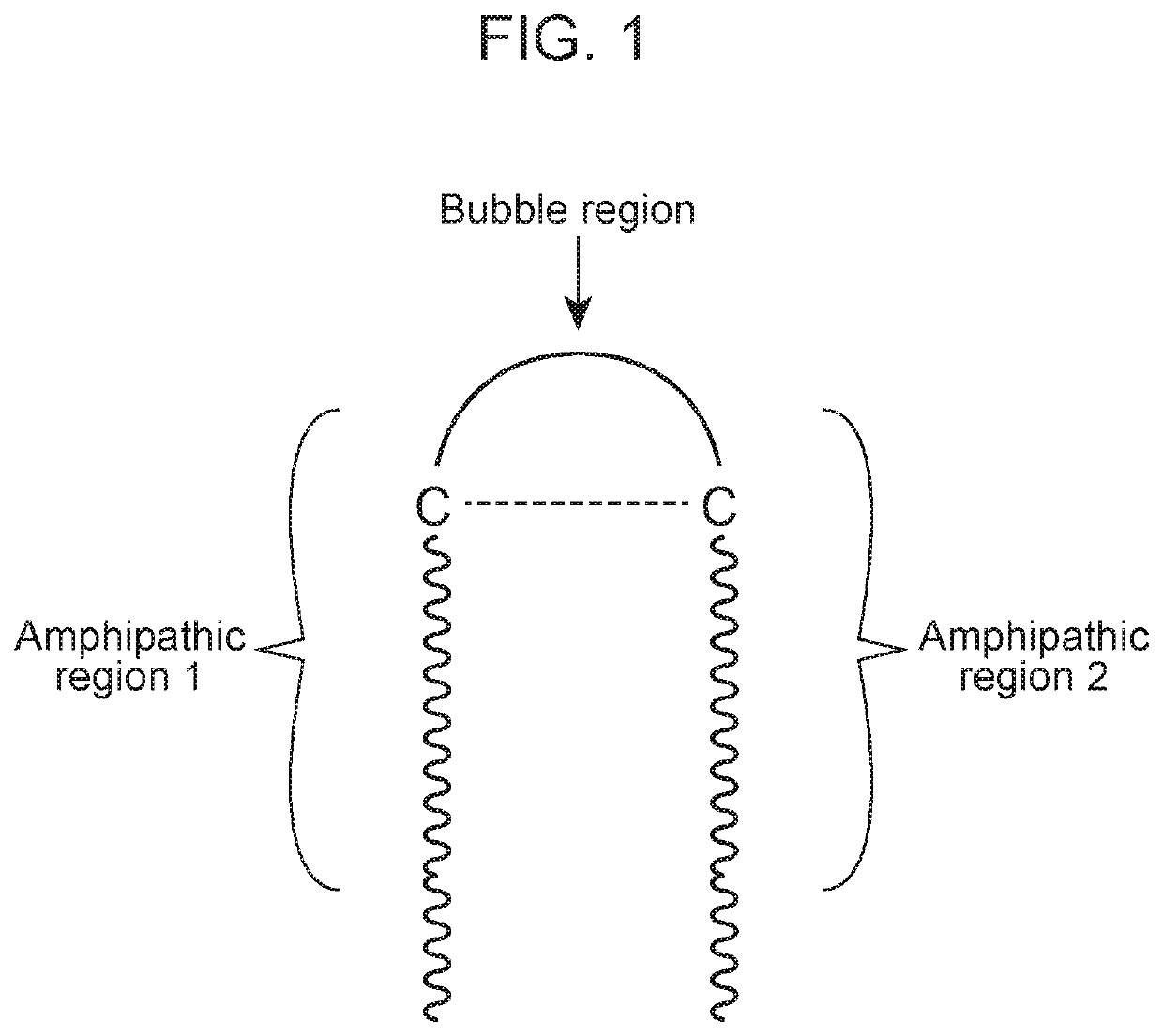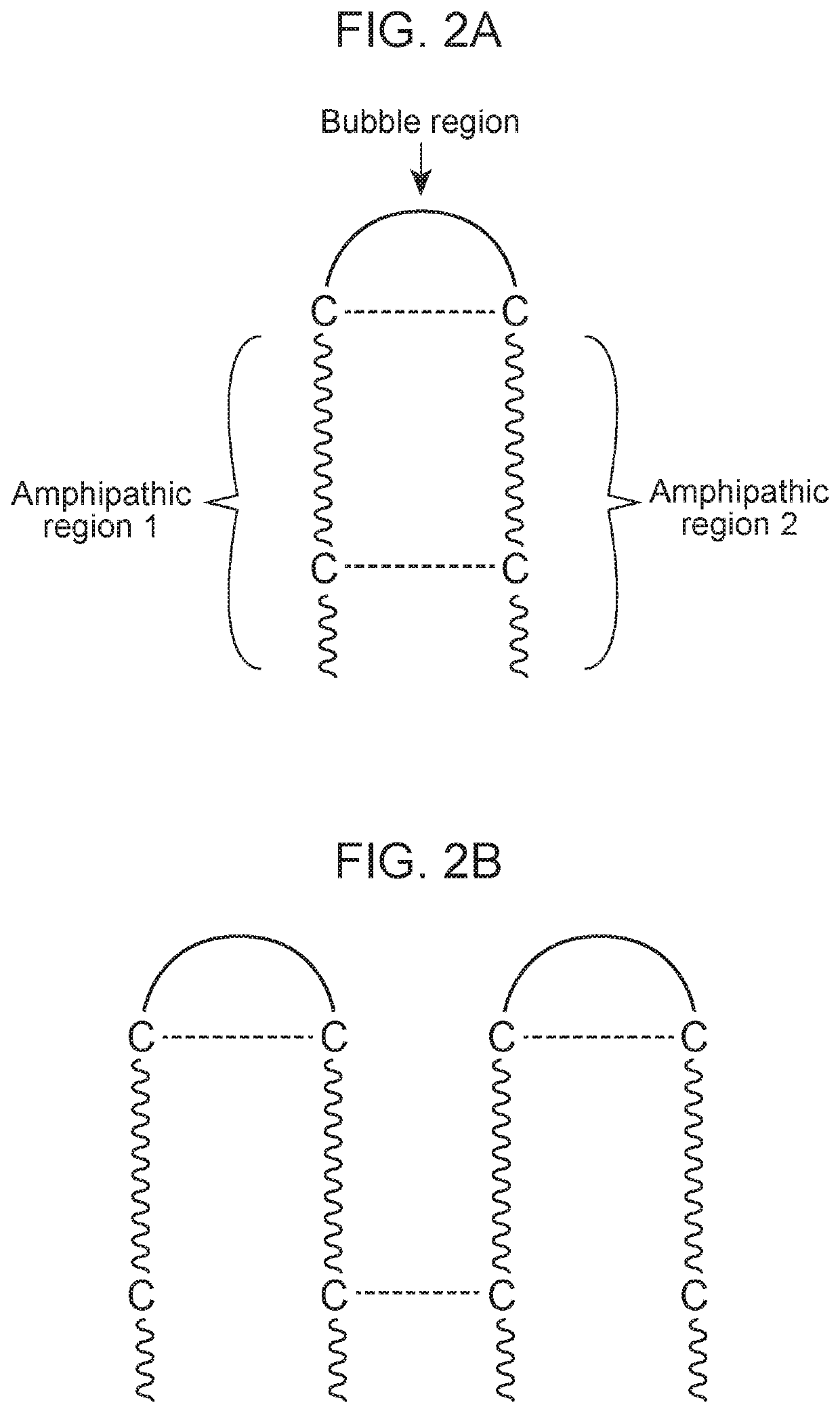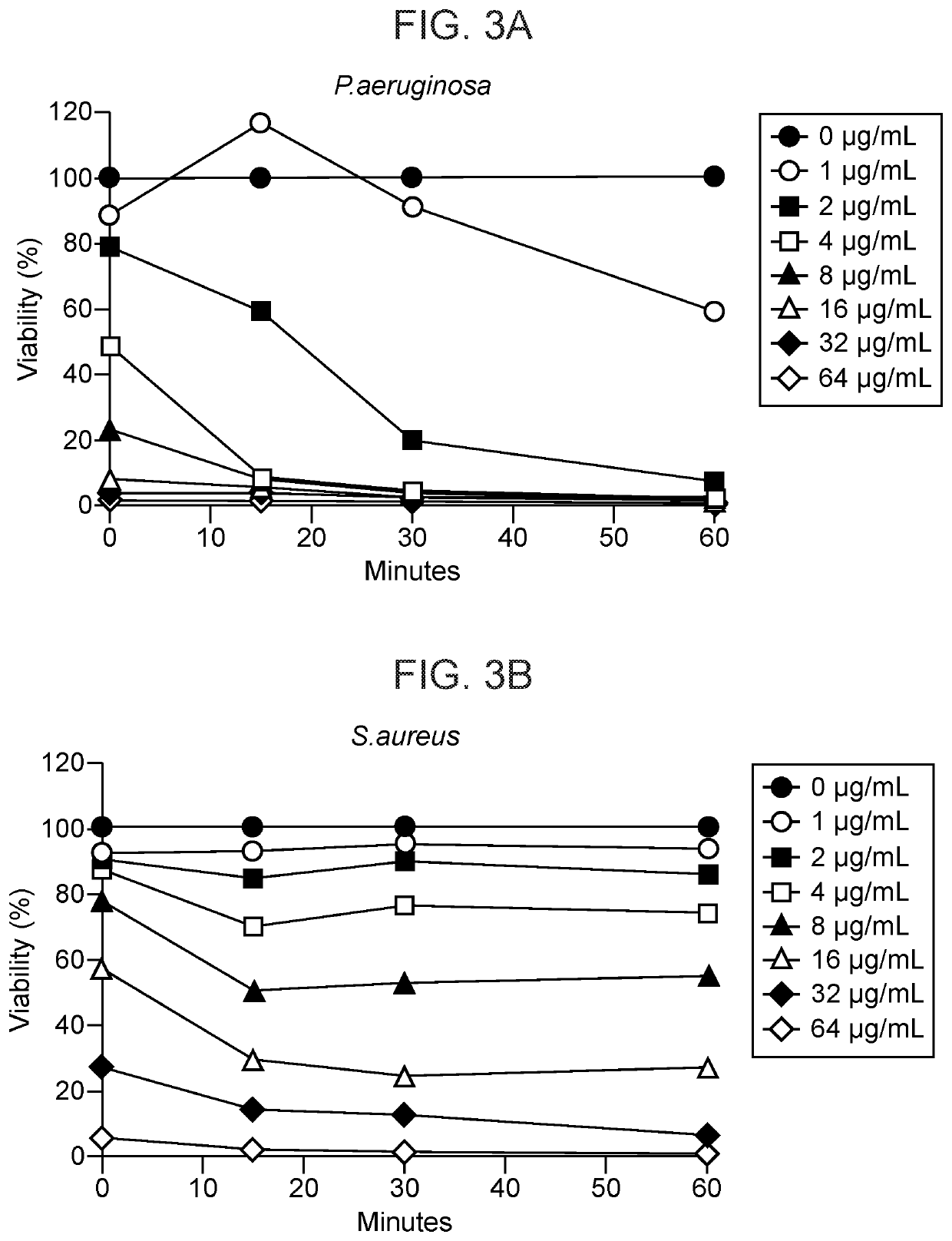Antimicrobial peptides and methods of using the same
a technology of antimicrobial peptides and peptides, which is applied in the direction of antibacterial agents, peptide/protein ingredients, spray delivery, etc., can solve the problems of increasing patient problems, weakened immune systems, and major health problems of antibiotic resistan
- Summary
- Abstract
- Description
- Claims
- Application Information
AI Technical Summary
Benefits of technology
Problems solved by technology
Method used
Image
Examples
example 1
Against Planktonic Gram-Negative and Gram-Positive Bacteria
[0199]Peptides are tested against the following challenge organisms by the M11-A8E CLSI standard for Antimicrobial Susceptibility Testing of Anaerobic Bacteria: Enterococcus faecium ATCC 700221; Enterobacter aerogens ATCC 13048; Staphylococcus aureus MRSA ATCC 33591; Streptococcus pneumoniae ATCC 49619; Pseudomonas aeruginosa ATCC 27853; Acinetobacter baumannii ATCC 17978D-5; Pseudomonas aeruginosa ATCC 19660; and Staphylococcus epidermidis ATCC 51625. Sample dilutions range from initial sample to 1:2048. Eleven (11) concentrations are tested in duplicate on a 96 well plate by MQA Laboratories. Results are shown as Minimum bactericidal concentration (MBC), which is the concentration of each peptide necessary to yield 99.9% lethality for each of the eight challenge organisms.
example 2
[0200]The Minimum Biofilm Eradication Concentration (MBEC) Assay is used. MBEC values provide estimates on the concentration of an antimicrobial product required to kill biofilm bacteria. The Calgary Biofilm Device (CBD) plate is used to effect biofilm formation on a lid containing 96 pegs. Bacterial cultures are grown and diluted in Tryptic Soy Broth (TSB) to approximately 1×107 CFU / mL before inoculation of the CBD plate, which are then incubated for 24 hr at 35° C. on a shaker at 125 rpm.
[0201]The peg lid containing biofilm is first rinsed in PBS to remove planktonic cells prior to treatment with 2-fold serial dilutions of test articles and control overnight at 35° C. The peg lid is rinsed in PBS twice before sonication in fresh media to disrupt biofilm adhered to the pegs. The plate is then incubated overnight to evaluate growth. Bacterial quantification is performed by measuring absorbance at 650 nm (A650). By definition, A650 reading of less than 0.1 ind...
example 4
rial and Antifungal Activity of Selected Peptides (IC50 Values)
[0203]Measurement of antimicrobial and anti-fungal activity is determined by a standard micrometer dilution method. Briefly, cells are grown overnight in media specified for each strain, and are diluted in the same media. Serial dilutions of the peptides are added to microtiter plates in a volume of 50 ul, followed by the addition of 50 ul of bacteria or fungi, 5×105 CFU / ml. Plates are incubated at 37 degrees for 24 hours and the Minimum Inhibitory Concentrations (MICs) are determined as the lowest peptide concentration that inhibited 50% of bacterial growth.
PUM
 Login to View More
Login to View More Abstract
Description
Claims
Application Information
 Login to View More
Login to View More - R&D
- Intellectual Property
- Life Sciences
- Materials
- Tech Scout
- Unparalleled Data Quality
- Higher Quality Content
- 60% Fewer Hallucinations
Browse by: Latest US Patents, China's latest patents, Technical Efficacy Thesaurus, Application Domain, Technology Topic, Popular Technical Reports.
© 2025 PatSnap. All rights reserved.Legal|Privacy policy|Modern Slavery Act Transparency Statement|Sitemap|About US| Contact US: help@patsnap.com



